Sagarmatha National Park is a UNESCO World Heritage site located in the northeastern region of Nepal. It is a majestic expanse that encompasses some of the world’s highest peaks, including Mount Everest. This park was established in 1976 and spans over 1,148 square kilometres. It is renowned for its rugged terrain, rich biodiversity, and cultural significance. It is home to rare wildlife like the snow leopard, red panda, and the Sherpa community. Sagarmatha National Park offers breathtaking landscapes, glacial valleys, and a spiritual connection to the Himalayas, making it a haven for adventurers and nature enthusiasts.
Sagarmatha National Park Location
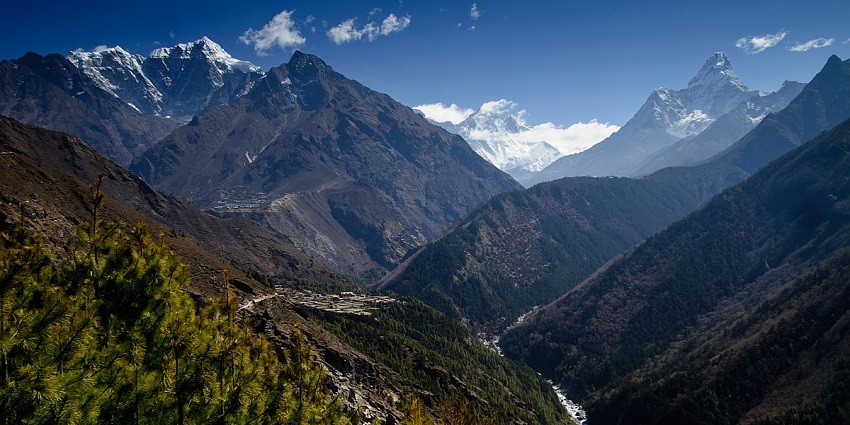
Photo: Thomas Fuhrmann / Wikimedia Commons
Sagarmatha National Park is located in the Himalayas of northeast Nepal. It encompasses snow-capped peaks with Mount Everest and glaciers, valleys and trails.
Suggested Read: Explore Top Wildlife Sanctuaries In Nepal For An Adventurous Retreat
How To Reach Sagarmatha National Park, Nepal
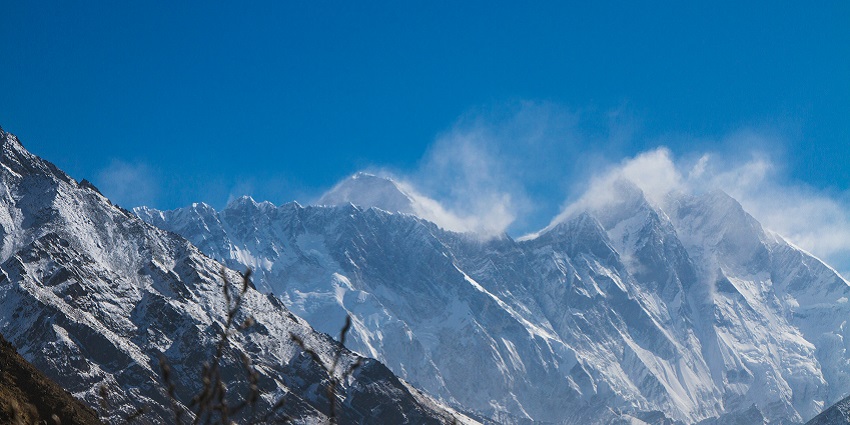
Photo: Karthik Thoguluva / Unsplash
Tourists can reach Sagarmatha National Park by air, bus, and rail, making it a popular choice for travellers arriving at this park.
By Air: The nearest airport to Sagarmatha National Park is the Tenzing-Hillary Airport. From here, you can travel to the national park by taxi or bus.
By Bus: Local buses offer a budget-friendly, comfortable, and time-efficient way to travel from different locations to Sagarmatha National Park.
By Rail: Gorakhpur Junction Station is the closest to Sagarmatha National Park. From there, tourists can rent cars or travel by bus to the park.
Places To Visit Around Sagarmatha National Park
Nepal and its surroundings offer a variety of attractions beyond its beautiful parks. Here’s a list of places to visit around Sagarmatha National Park
1. Mount Everest

Photo: Joe Hastings / Wikimedia Commons
Mount Everest is the highest peak on Earth, standing at 8,848.86 metres above sea level in the Himalayas and on the border between Nepal and the Tibet Autonomous Region of China. It is known as “Sagarmatha” in Nepali and “Chomolungma” in Tibetan. It is revered culturally and spiritually, and climbing Everest is considered one of the ultimate challenges in mountaineering, attracting adventurers from around the world. The mountain’s icy slopes, treacherous crevasses, and extreme altitudes pose significant risks, but its allure remains unmatched, symbolising human endurance and the pursuit of exploration.
Timings: 24*7
Suggested Read: Jungle Safari In Nepal
2. Kala Patthar
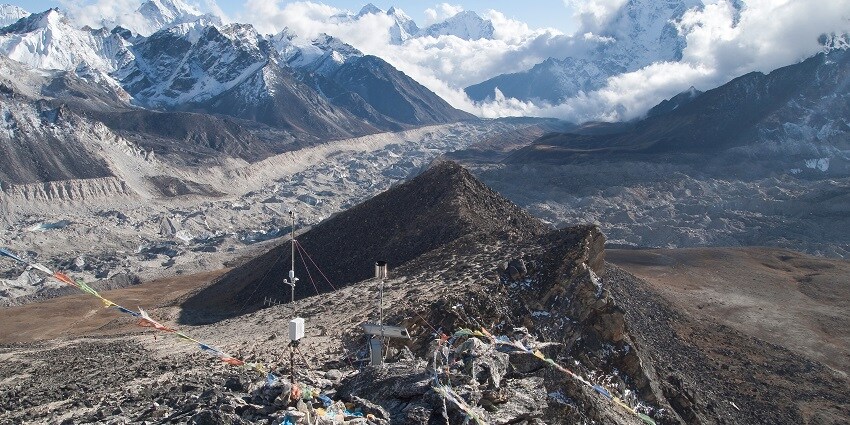
Photo: Vyacheslav Argenberg / Wikimedia Commons
Kala Patthar is one of the famous viewpoints of the Everest region in Nepal, standing at an altitude of 5,643 metres. Although it is not a mountain peak, it provides one of the more dramatic views of Mt. Everest, Nuptse, and Lhotse, as well as the other great giants that form the surrounding amphitheatre of the Himalayas. It is perched next to Gorak Shep. Kala Patthar is regarded as a holy site for trekkers, especially at sunrise or sunset, with its peaks casting golden light. The way to Kala Patthar is quite steep, but the fantastic views make it rewarding.
Duration: 12-14 day trek
3. Everest Viewpoint
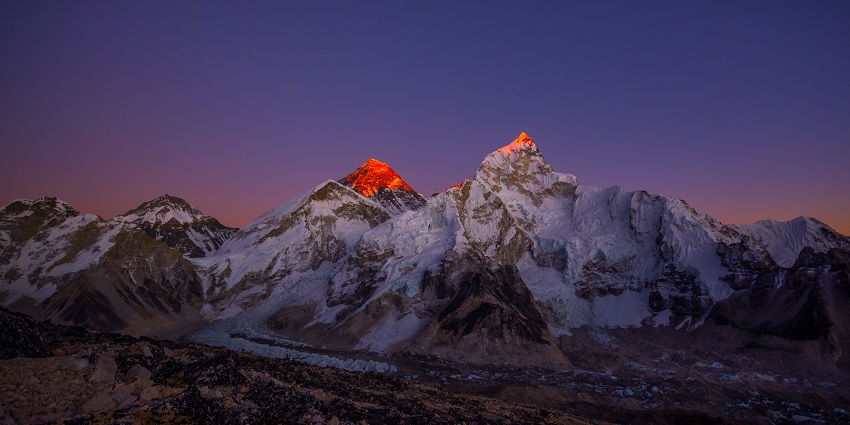
Photo: Nir B. Gurung / Wikimedia Commons
The view from Everest Viewpoint in Nepal offers trekkers and visitors one of the most unforgettable panoramas of the majestic Himalayas, inclusive of the iconic Mount Everest. This viewpoint is located inside the Sagarmatha National Park and is usually reached through the famous Kala Patthar trek near Gorak Shep. From here, tourists can view towering peaks that rise into the sky, like Lhotse, Nuptse, and Ama Dablam. The views at sunrise are breathtaking when golden rays peek into the mountains. The viewpoint of Mount Everest is an epitome of the region’s natural beauty.
Timings: 24*7
Suggested Read: Popular Places To Visit In Pokhara
4. Sherpa Museum

Photo: Dannie Jing / Unsplash / Image For Representation Only
The Sherpa Museum is situated in Namche Bazaar. It is a cultural treasure trove committed to the conservation and exhibition of the rich heritage of the Sherpas. It showcases the history, traditions, and daily life of the Sherpas, who are famous as mountaineers. Traditional costumes, several types of implements and tools, religious objects, and photographs documenting mountaineering activities are on display here. With its informative displays and stunning location, the Sherpa Museum gives an in-depth appreciation of the Sherpas’ abiding connection with the Himalayas.
Timings: 8 AM – 4 PM
Entry Fee: ₹ 250, NPR 398.57
5. Namche Bazaar

Photo: strudelt / Wikimedia Commons
Namche Bazaar is the district administrative headquarters of Solu-Khumbu at an elevation of 3,440 metres above sea level in the Khumbu region of Nepal. It is a large mountain town with a sea of colourful lodges perched on the side of a hill, offering great views of surrounding peaks. Namche is considered the gateway to the Everest region and a vital acclimatisation spot for trekkers bound for Everest Base Camp. The town is known to amalgamate traditional Sherpa culture and modernity with its busy markets, warm lodges, and shops selling trekking gear. The village of Namche Bazaar, lying at the foot of towering mountains, has developed into both a cultural hub and a haven for adventure enthusiasts.
Timings: 24*7
Suggested Read: Guide To Royal Chitwan National Park Nepal
Where To Stay
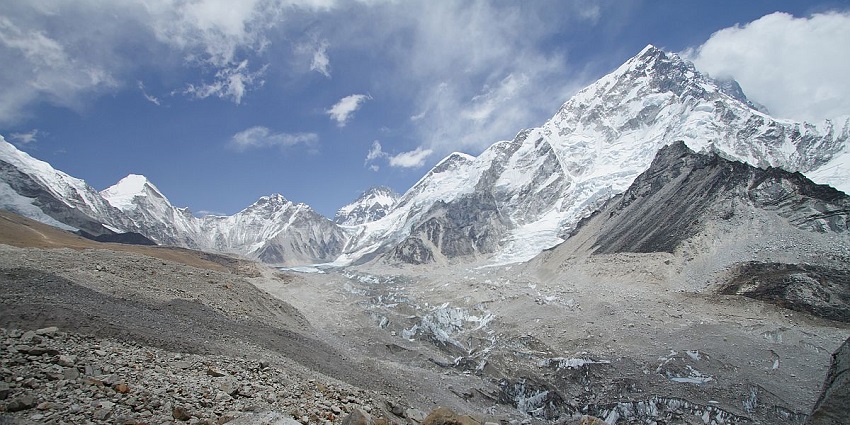
Photo: Thomas Fuhrmann / Wikimedia Commons
Sagarmatha National Park has many nearby accommodations that suit different budgets and tastes. Some recommended places are Panorama Lodge Restaurant, Thanka Inn Gyoko, and Trekkers Lodge. For a good, hassle-free experience, ensure you book in advance, consider proximity to the local attractions, dining options, and public transport, and check on travel websites or apps for current reviews.
Where To Eat
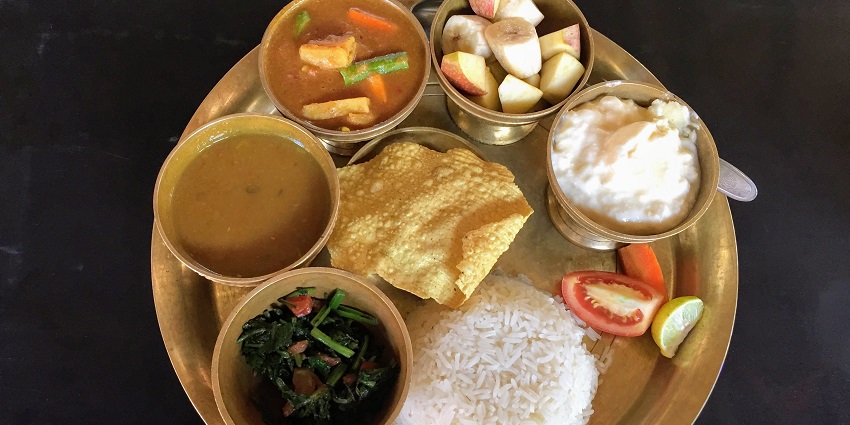
Photo: Subhashish Panigrahi / Wikimedia Commons
Savour delicious food at Lukla Coffee House, Sherpa Barista Bakery, and Cafe Himalaya. Visitors can taste local flavours by indulging in regional specialties.
Suggested Read: Water Parks In Kathmandu For A Refreshing And Exciting Day
Best Time To Visit Sagarmatha National Park
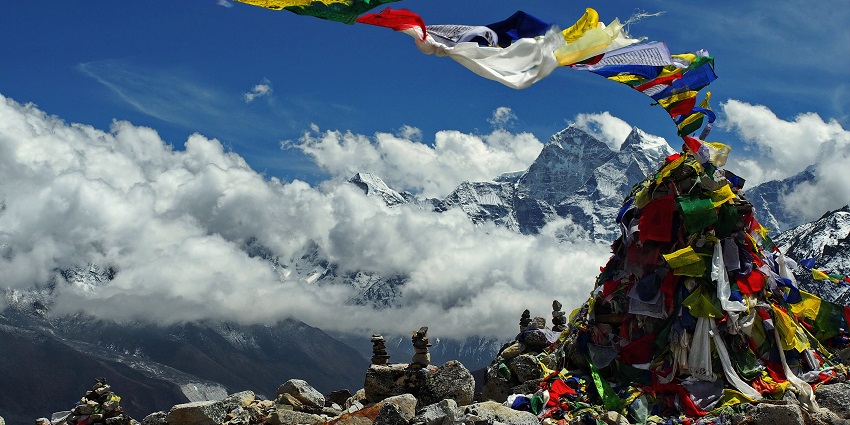
Photo: Lesley Junlakan / Wikimedia Commons / Image For Representation Only
The best time to visit Sagarmatha National Park is from October to November when the weather is pleasant and cold. This is the most suitable time to explore the national park and the nearby attractions. You should also keep a note of the Sagarmatha National Park timings to plan your trip.
Other Factors To Consider
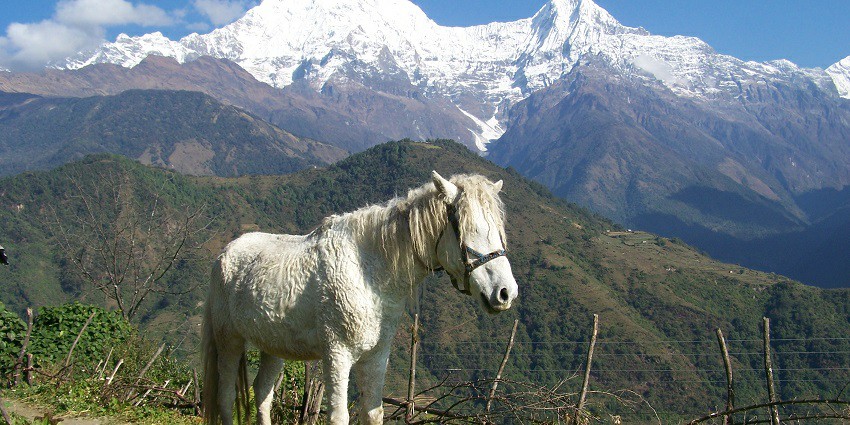
Photo: Nancy Collins / Wikimedia Commons / Image For Representation Only
Here are some factors to consider before you take a trip to Sagarmatha National Park.
Average Cost Of The Trip
The cost of a trip to Sagarmatha National Park varies based on travel style, accommodation, dining, and activities. A Sagarmatha National Park ticket price ranges from NPR 1000 – NPR 1500 ( ₹ 629 – ₹ 943); however, costs may vary depending on other facilities. It ranges from NPR 6,000 to 12,000( ₹ 3774 – ₹ 7549).
Tips For Travellers
- To plan your visit, book in advance and pack accordingly with light, breathable clothing and essentials.
- Respect the environment around you when taking Sagarmatha National Park photos.
- Do not litter inside the national park.
Suggested Read: Best Places To Visit Near Kathmandu To Explore Nepal
Sagarmatha National Park stands as a testament to the Himalayas’ awe-inspiring beauty and ecological richness. Its towering peaks, diverse wildlife, and cultural heritage offer an unparalleled experience for visitors. Whether for adventure or spiritual reflection, the park leaves an indelible impression, reminding tourists of the profound connection between nature and humanity. So what are you waiting for? Plan your dream getaway with TripXL and explore this stunning park.
Cover Photo: Gunter Nuyts / Pexels / Image For Representation Only


 WhatsApp
WhatsApp
 Twitter
Twitter









